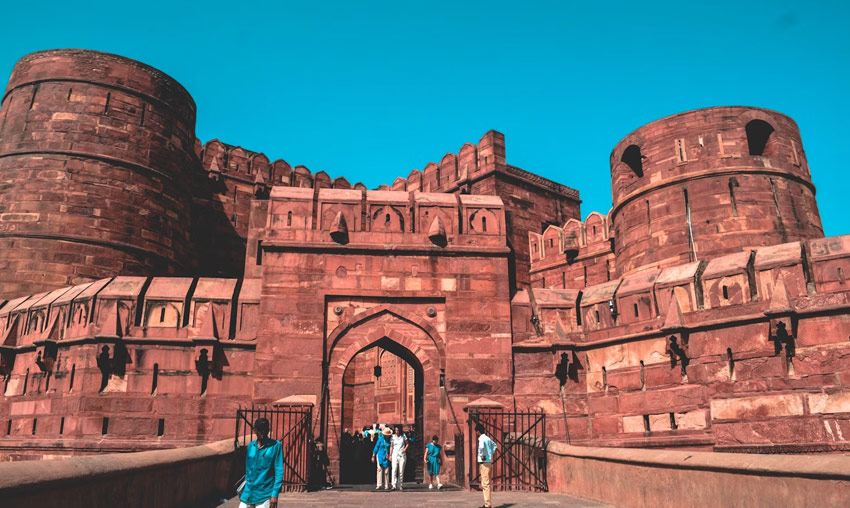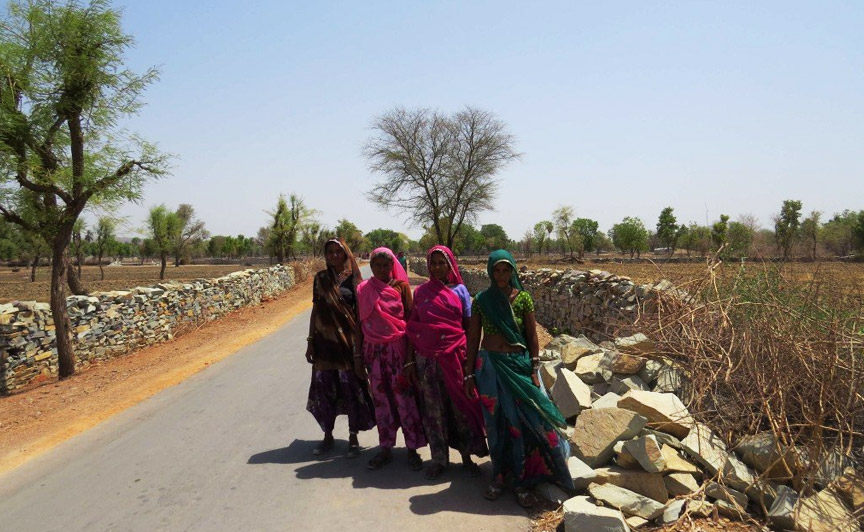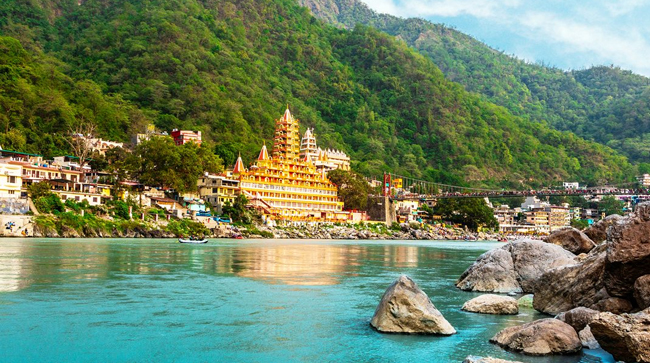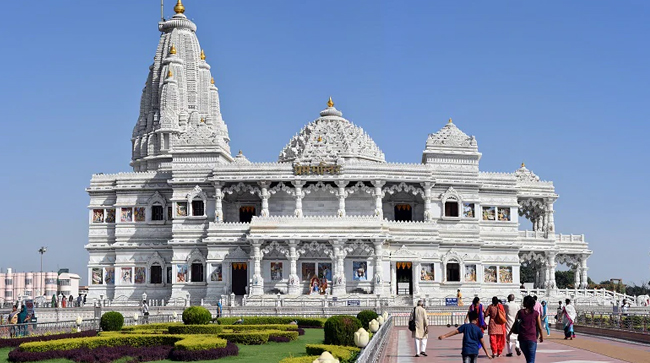The Taj Mahal, one of the Seven Wonders of the World, is situated in Agra beside the Yamuna River. The Mughal Emperor Shah Jahan constructed it as a monument in honour of Mumtaz Mahal, his third wife. The tomb of Shah Jahan is also located there. One of the most exquisite monuments in the world, the Taj Mahal was built in the 17th century using only white marble. Over a million people visit the beautiful gates each year to see this amazing monument—more people than the entire population of Agra!
The Taj Mahal, a UNESCO World Heritage Site, is known as the Crown of Palaces in Persian. The tomb has a rectangular layout and is accessible by a large doorway with alcoves and an arch on either side. The monument is enhanced by the presence of water channels and fountains at the entry. The Yamuna’s reflection of this magnificent show is so flawless it borders on poetry!
The Taj Mahal was built across an area of around 42 acres, and it took 17 years to finish, starting in 1631 and ending in 1648! The white marble used in its construction came from Makrana in Rajasthan.
Inside Taj Mahal
There are three gates leading to the Taj Mahal: east, west, and south. The beautiful gardens inside the grounds follow the traditional Mughal charbagh lines (formal Persian garden). With its back to the Yamuna River, the monument is positioned on an elevated marble platform at the northernmost point of the garden. Its elevated placement, which leaves the sky as its backdrop, is a brilliant design choice. The platform is adorned with 40-meter-tall white minarets in each corner. The Taj itself is sculpted with flowers and constructed from semi-translucent white marble that has hundreds of semi-precious stones set within it. The four indistinguishable faces of the Taj are in perfect symmetry, featuring impressive vaulted arches containing pietra dura scrollwork and the quotations from the Quran. The whole structure is topped off by four small domes.
Just beneath the main dome is Mumtaz Mahal’s cenotaph. It is a complex artificial tomb placed against the Taj Mahal’s symmetry with an exquisite marble screen surrounding it that is inlaid with a variety of semi-precious stones. The central chamber is illuminated by means of intricately carved marble screens. The actual Mumtaz Mahal tombs are not these fake ones, and Shah Jahan is buried underneath the main chamber in a sealed chamber.
To the west of the complex is a mosque made of red sandstone that serves as a major hub for Agra’s Muslim community. To maintain symmetry, the Jawab, a building that is exactly the same, was constructed to the east. The tiny Taj Museum, located inside the Taj, is home to numerous authentic miniature artworks by Mughals. The main draw is a pair of ivory pictures of Mumtaz Mahal and the monarch Shah Jahan from the 17th century. Additionally, it has certain Caledon dishes that, if food is served on them that contains poison, are supposed to break into bits or change colour.
History of Taj Mahal
Shah Jahan constructed the Taj Mahal as a tomb in memory of his wife Mumtaz Mahal, who passed away in 1631 while giving birth to their fourteenth child. The emperor’s hair is supposed to have turned grey overnight, and he was left grieved by her death. In 1632, work on building the Taj Mahal started. While the main building took eight years to complete, the complex took longer to finish, taking until 1653. Shah Jahan was deposed by his son Aurangzeb shortly after the building was finished, and he was taken prisoner in the Agra Fort. He would be limited to looking out of a window at his amazing work for the rest of his life. Following his death in 1666, Mumtaz and Shah Jahan’s mortal bones were interred here.
This impressive structure was constructed by more than 20,000 workers from throughout India and Central Asia. Professionals who created the exquisite marble screens and marble inlay (pietra dura), which is composed of thousands of semiprecious stones, were brought in from as far away as Europe. UNESCO named the Taj Mahal a World Heritage Site in 1983. It appears just as immaculate as when it was first built. In the early 20th century, a significant restoration project was undertaken for the monument.
Facts About Taj Mahal
There is a widely known legend that the Taj Mahal was originally a Shiva temple constructed in the twelfth century and then transformed into Mumtaz Mahal’s mausoleum. The creator of this hypothesis is Purushottam Nagesh Oak. In an attempt to validate his theory, he petitioned the Supreme Court in 2000 to have the sealed subterranean rooms opened, but it was denied. There’s also the tale of the renowned Black Taj Mahal. Many thought that Shah Jahan intended to erect a black marble alteration of the monument on the other side; construction on this project had started prior to his son Aurangzeb’s imprisonment. At Mehtab Bagh, extensive excavations were conducted, but no evidence of any such construction was discovered.
The mutilation of the artisans who built the Taj Mahal is a well-known tale surrounding it. Shah Jahan is said to have ordered the project’s artisans’ hands to be severed upon completion in order to prevent any other edifice in the world from ever becoming as exquisite. Nevertheless, this view is unsupported by historical data.
Taj Mahal Garden
One of the main attractions of a trip to the Taj Mahal is the garden that adorns the monument of love, extending from the entrance to the base of the mausoleum. Babur introduced the idea for this garden, also called the Paradise Garden, which was constructed in the Persian Timurid style. Using the number four and its multiples is a distinctive practice used in the construction of this garden. Since four is regarded as the holiest number in Islam, this was done. The charming garden is separated into four sections, with the fountains located in the middle of two marble canals that are dotted with them.
There are sixteen flowerbeds in each quarter section of the garden, each with four hundred plants placed in it. Abundant with lush trees, chattering birds, fruits, flowers, and symmetry, the Taj Garden symbolises the ultimate notion of paradise in its abstract form. This charming location provides a great backdrop for those ideal pictures.
Taj Mahal at Night
Five days a month, including the night of the full moon and the two evenings preceding and following it, are available to view the Taj Mahal at night. The Archaeological Survey of India determines all these things, including the dates and times for nighttime Taj viewing. The Taj Mahal is open for nighttime viewing from 8:30 p.m. to 12:30 p.m. in eight groups of roughly 50 individuals, each lasting thirty minutes. As a result, just 400 persons are permitted on a single night.
It is necessary for those viewing the Taj Mahal at night to get at the Shilpagram complex thirty minutes early. They may only see the Taj Mahal from a distance and are not permitted inside the monument at night. The night viewing begins with a check-in at a security counter for all personal items and bags. During night viewing, video cameras are not permitted within the monument.
Best Time to Visit Taj Mahal
Unquestionably, the sunrise is the best time to visit the Taj Mahal because it is at its most majestic. Because there are less people there, this is also the most comfortable time to visit. The Taj Mahal is especially beautiful at sunset. Additionally, you are welcome to visit it five nights during a full moon. There is a cap on the number of entry tickets available during this period, thus they must be purchased from the Archaeological Survey of India office one day in advance.
How To Reach Taj Mahal
Tongas, electric buses and tempos are available modes of transportation for getting to and from the Taj Mahal. State buses and auto rickshaws are also available. Cars are not permitted near the Taj and must be parked in parking areas that are close to the tomb in order to reduce the impact of pollution on the monument. From the parking lot, there are tourist buses that aren’t electric.
The Agra Fort and the Taj Mahal are relatively near to one another, so you may stroll between them in the off-season. A minimum sum is charged for the numerous vehicles and battery-powered rickshaws that go between the two main monuments.
Price For Regular Tickets
Here is what you will have to pay to visit the monument for a typical sunrise to sunset view:
• For foreign visitors, the cost of the ticket is INR 1100.
• The cost of the ticket is INR 540 if you are a citizen of a SAARC or BIMSTEC nation.
• The cost of the ticket is INR 50 if you are an Indian, a domestic traveller, or the bearer of an OCI card.
• Children under the age of fifteen can enter the Taj Mahal for free.
Note: In addition to the entry payment, there will be an additional charge of INR 200 if you wish to access the main tomb.
Ticket Price For Moonlight View
Here is what you will have to pay to enjoy the allure of the white marbled marvel in the moonlight:
• The cost of the ticket is INR 750 for foreigners.
• The cost of a ticket is INR 510 for those who are Indian or domestic.
• The cost of the ticket is INR 500 if you are a child between the ages of 3 and 15.
• There is no charge to enter the Taj Mahal for children under three.






